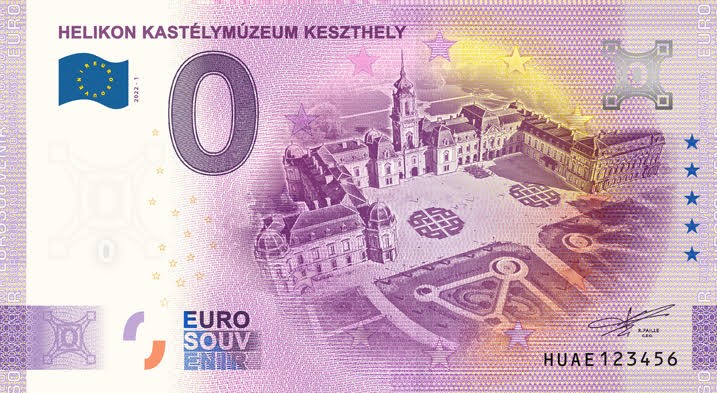Francis II Rákóczi
Ferenc Rákóczi, Hungarian nobleman, leader of the Rákóczi War of Independence, leading prince of Transylvania and the Hungarian orders. One of the most outstanding figures in Hungarian history, he sought to regain Hungary’s independence from Habsburg oppression. His motto: Cum Deo pro patria et libertate! (With God for the country and for freedom!)
3,000.00Ft
In stock
More about the banknote
Francis II Rákóczi
Francis II Rákóczi 1676. was born on 27 March 1676 at Borsi Castle in Zemplín County, as the third son in a noble family. Her father was Ferenc Rákóczi I, Prince of Transylvania, her mother Ilona Zrínyi, daughter of a Croatian king. He lost his father at an early age and was brought up under the tutelage of Imre Thököly, who brought him up from an early age to a life of hard soldiering. After Tököli was captured by the Turks, his wife Helena Zrinska took over the leadership of Mukačevo Castle and defended it heroically against the Habsburgs for three years.
After the fall of the castle, the family was deported, Helena was sent to Vienna and the young František to Bohemia to continue his studies.
In 1700, he began secretly corresponding with the French Sun King Louis XIV, but the letters reached the Viennese court and Rakoci was arrested on charges of treason. He managed to escape from prison to Poland. Three years later he returned at the request of the Curoc rebels. He issued a proclamation in which he called on the Hungarians to take up arms and fight for their freedom and demanded the overthrow of the Habsburg dynasty, the restoration of the rights of the Kingdom of Hungary and the recognition of the independent Principality of Transylvania.
In June 1703, he led the Curonian uprising.
In 1704 he was elected Prince of Transylvania at the Diet of Gyulafehérvár. In 1705, the next parliamentary session was held in Szécsény, in the field called Borjúpást, where he received the titles of “dux & princeps”, i.e. “chief and prince”, from the Hungarian orders.
In the following years, several attempts were made to make peace, but none of them were successful, while the military situation was becoming more and more critical. In 1711 he travelled again to Poland. During his absence, his commander-in-chief signed a peace treaty, which is now known as the Peace of Satmar. Rákóczi never accepted it, refused to take the oath of allegiance, and instead went into voluntary exile. He found refuge in Rodosto, in the Ottoman Empire, where he lived until his death.
In 1906, his remains were brought home and placed in the Cathedral of St. Elizabeth in Košice.
A brief history of the museum
The Ferenc Kubinyi Museum was founded in 1973. After moving the county’s archaeological, numismatic and petrological rock collection from the Balassagyarmat Museum, it became the youngest institution of Nógrád County at that time. In 1979, the museum officially adopted the name of Ferenc Kubinyi, paying tribute to the memory of the scientist. Ferenc Rákóczi II. held the parliamentary session of Szécsény in the village, and the building was reconstructed to celebrate the 300th anniversary of the parliamentary session. Since 2013, the manor house has been registered, as a historical monument. The Forgách-Lipthay Castle, a jewel of Baroque architecture in the countryside, is the MNM Kubinyi Ferenc Museum’s home, containing details of the medieval castle, while the underground remains reveal the castle’s fortress against the Turks. Forgách-Lipthay Manor, which houses the Ferenc Kubinyi Museum, is one of the jewels of rural Baroque architecture, where details of a medieval castle can be seen. “The permanent exhibitions present the prehistory of Nógrád County, the castles, the Turkish period, the state of Rákóczi and the 19th century women’s suite, as well as the castle history and hunting exhibition” – Dr. Gábor Limbacher, director.
If you have any questions, please contact us at info@euroemlekpenz.hu.
Why do 0 euro banknotes have collector value?
- paper and security features identical to genuine euro banknotes (holograms, letters, UV elements, …)
- produced at the Oberthur Technologies printing plant in Paris, which also produces genuine euro banknotes
- Each piece is unique thanks to serial numbering (like the classic banknotes)
- they are produced in a limited number of editions, which increases their value among collectors
How to buy a banknote?
Place the banknote of your choice in the basket, fill in your details at the checkout and then pay for your order. You can choose from:
Why do 0 euro banknotes have collector value?
- paper and security features identical to genuine euro banknotes (holograms, letters, UV elements, …)
- produced at the Oberthur Technologies printing plant in Paris, which also produces genuine euro banknotes
- Each piece is unique thanks to serial numbering (like the classic banknotes)
- they are produced in a limited number of editions, which increases their value among collectors
Similar prints and editions


New editions coming soon!
We are working on a new edition for your collection. Get to know our banknotes issued so far.





